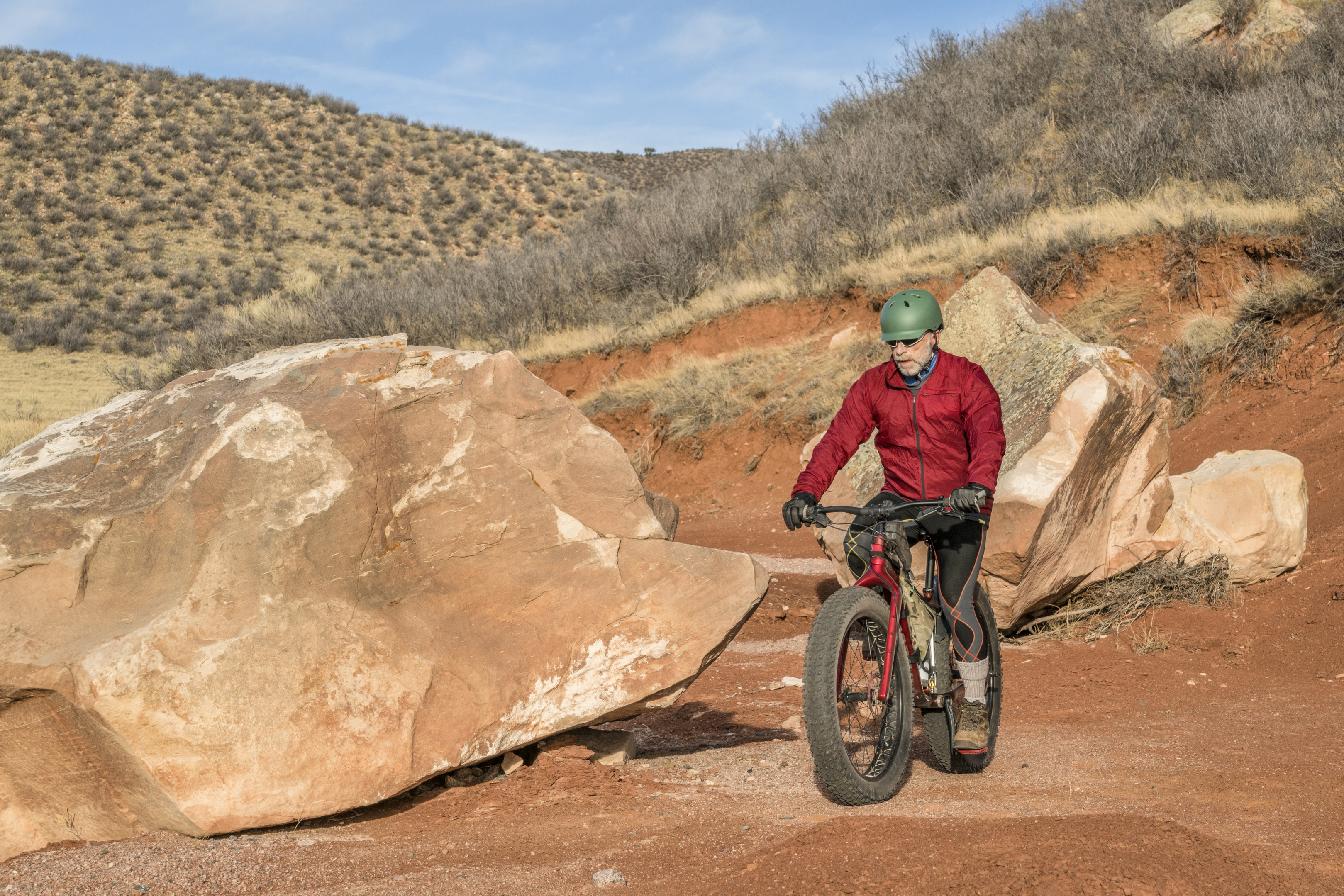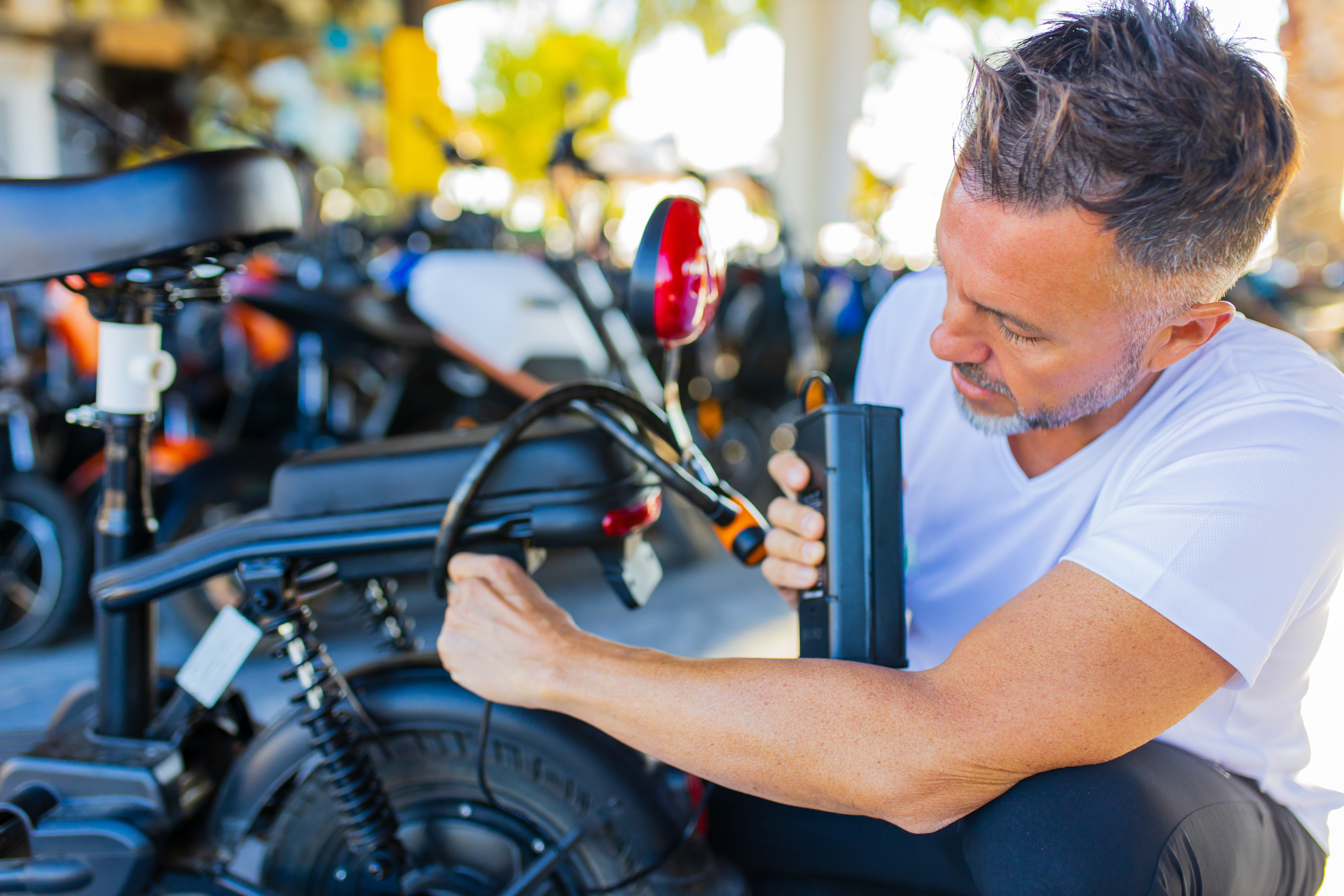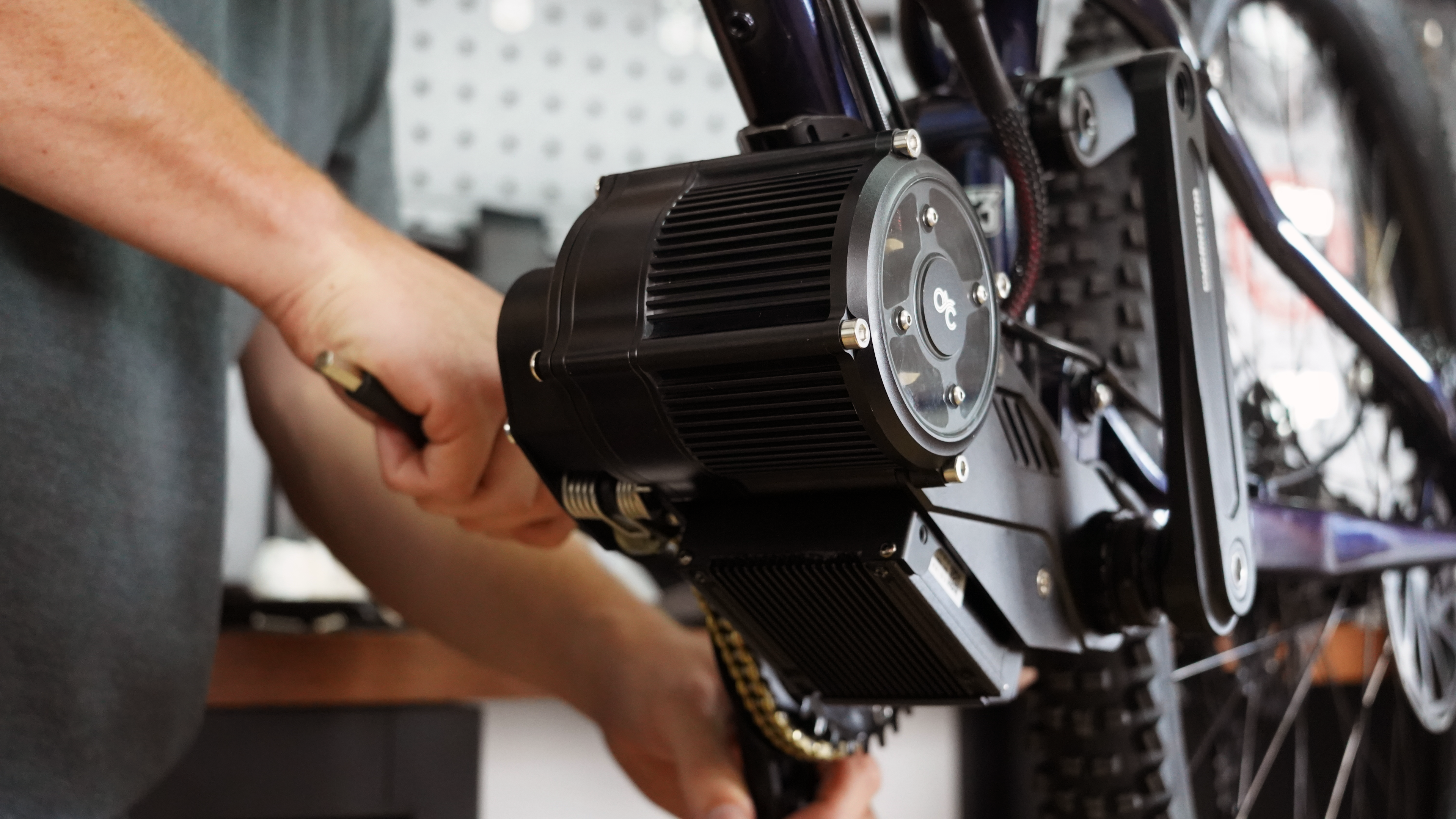Electric Kit for Bike 2023: Get the Most Out of Your Bike with a Kit
Did you know that you can transform your existing bicycle into an electric bike with an electric kit for bike? These kits come in various types, offering you different options, benefits and installation processes. In this blog post, we’ll explore the top electric bike conversion kits for 2023 and guide you through the process of choosing the right one for your needs. Whether you’re a DIY enthusiast or prefer professional assistance, we’ve got you covered with the best electric kit for bike options.
Short Summary
-
Explore the top electric bike conversion kits for 2023, featuring mid-drive, hub motor and friction drive options.
-
Understand features & benefits of powered e-bike wheels, mid-drive systems and friction drive systems to choose the right kit.
-
Consider legal requirements in your region when selecting a kit & compare costs between conversion kits vs complete bikes before installation.
Top Electric Bike Conversion Kits for 2023

As the popularity of electric bikes continues to soar, the market is flooded with a variety of electric bike conversion kits. These kits are designed to cater to various preferences and budgets, offering mid-drive, hub motor, and friction drive options. By converting your existing bike into an electric one, you can reap the benefits of reduced carbon footprint, ease of parking, fuel cost savings, and less fatigue compared to a regular bike.
Electric bike kits, also known as electric bicycle kits, can range from £250 ($350) to £750 ($900), depending on the model. As you explore the options, consider factors such as your bike’s condition, legal considerations, and the costs of conversion kits vs. the electric bike worth of complete electric bikes.
Keep reading to discover the top electric bike conversion kits for 2023, including our favorites in the mid-drive, front hub motor, and friction drive categories.
Mid-Drive Conversion Kits
Mid-drive conversion kits have gained popularity for their smooth ride experience and efficient electric assistance. These kits come with all the necessary components, including drivetrain components disc brakes, a torque sensor, and compatibility with bottom brackets ranging from 68 to 73mm in size. With the option to customize the front chainring size, battery size, and display, mid-drive kits offer a tailored riding experience for various needs.
When considering a mid-drive e bike conversion kit, look for options that provide a natural ride feel and efficient power transfer. Some of the top mid-drive electric bike conversion kits on the market offer seamless integration with your bike’s existing components, ensuring a harmonious blend of performance and aesthetics.
Hub Motor Conversion Kits
Hub motor conversion kits are another popular choice for converting your bike into an electric one. These kits utilize a hub motor, typically located in the the front wheel or rear wheel, and are designed for easy installation and reliable performance. The most commonly available hub motor conversion kits include powered e-bike wheels, mid-drive systems, and friction drive systems.
The benefits of hub motor conversion kits include straightforward installation, robust setup, and the ability to unplug and remove the battery for storage or to reduce the weight of the bike when necessary. To choose the ideal hub motor conversion kit for your needs, consider factors such as your bike’s condition and components, legal considerations, speed limits, and costs of kits vs. complete electric bikes, as well accessories such as the range, motor wattage, and type of display and cadence sensor.
Friction Drive Conversion Kits
For those seeking a simpler and more affordable option, friction drive e bike conversion kits are worth considering. These kits utilize a friction drive system, where a motor-powered roller is pressed against the bike tire to provide power. One popular example is the Rubbee electric bike conversion kit, a rear-mounted friction drive system that starts at €579 and weighs only 2.8kg for the base model.
While friction drive conversion kits may not offer the same level of performance as mid-drive or hub motor kits, they are an excellent choice for those who prioritize simplicity and affordability. Keep in mind that the compatibility of many kits and friction drive systems with various bike types and tire sizes may vary, so it’s crucial to ensure that the kit you choose is suitable for your specific bike.
Understanding Different Types of Electric Bike Conversion Kits

Before diving into the world of electric bike conversion kits, it’s essential to understand the three primary types: powered e-bike wheels, mid-drive systems, and friction drive systems. Each type offers its own set of advantages and drawbacks, depending on your preferences, budget, and the type of bike you own.
For instance, powered e-bike wheels are an excellent choice for those looking for a straightforward conversion process, while mid-drive systems provide a more natural ride feel and efficient power transfer. Friction drive systems, on the other hand, are known for their simplicity and affordability, although they may not be compatible with all types of bikes.
By understanding the differences between these types and other systems of conversion kits, you’ll be better equipped to choose the best one for your needs.
Powered E-Bike Wheels
Powered e-bike wheel conversion kits consist of a special hub motor and a separate battery for power. These kits are an attractive option for their practicality, price and ease of installation. However, one primary disadvantage is that they increase the rotational mass on the bike, making acceleration more difficult compared to a bike with non-rotational mass.
When considering a powered e-bike wheel conversion kit, it’s important to be aware of systems managed by a throttle (also called “twist-and-go”), as they are classified as electric motorcycles instead of e-bikes and require taxation and insurance. Always check the regulations in your region to ensure compliance with local laws.
Mid-Drive Systems
Mid-drive systems are favored for their natural ride feel and efficient power transfer, making them a popular choice for electric bike conversion kits. These kits integrate seamlessly with your bike’s existing components and are compatible with most bottom brackets, although specific configurations or unusual wheel sizes might pose compatibility issues.
It’s crucial to research the legal requirements for electric bike conversion kits in your region before making a decision. In Australia, for example, the maximum speed for electric bikes is 25 km/h, and these regulations may differ in other countries. Be sure to choose a mid-drive system that meets the legal requirements in your area.
Friction Drive Systems
Friction drive systems work by utilizing a roller pressed against the bike tire to generate forward propulsion. While they may not be as prevalent as hub motors or mid-drive systems, friction drive systems offer a simple and affordable option for those looking to convert their bike into an electric one.
When considering a friction drive system, be aware that compatibility with various bike types and tire sizes may vary. It’s essential to ensure that the kit you choose is suitable for your specific bike. Additionally, as with any electric bike conversion kit, it’s crucial to be aware of the legal speed limits and regulations in your region to ensure compliance with local laws.
Choosing the Right Electric Bike Conversion Kit for Your Needs

With a plethora of electric bike conversion kits available on the market, choosing the right one can be a daunting task. To make an informed decision, it’s crucial to assess your bike’s condition and components, consider legal speed limits and regulations, and compare the costs of conversion kits vs. complete electric bikes. Remember that factors such as your city’s terrain, your bike’s compatibility with various kits, and your personal preferences and budget will play a significant role in determining the best electric bike conversion kit for your needs.
Keep reading for more guidance on assessing your bike’s condition, understanding legal considerations, and comparing costs.
Assessing Bike Condition and Components
Before deciding on an electric bike conversion kit, it’s essential to evaluate your bike’s current state and component quality. Inspect your bike for abnormal noises, frame damage, tire condition, and drivetrain and brake system. By identifying any potential issues beforehand, you can ensure a smooth and successful conversion process.
If you’re unsure about your bike’s condition or the compatibility of a specific conversion kit, consult a reliable bike shop for advice. They can help assess your bike’s suitability for conversion and provide guidance on choosing the right kit for your needs.
Legal Considerations and Speed Limits
When selecting an electric bike conversion kit, it’s crucial to be aware of the legal speed limits and regulations in your region. In Australia, the maximum speed for electric bikes is 25 km/h, and these regulations may differ in other countries. Be sure to choose a kit that meets the legal requirements in your area to avoid any potential fines or penalties.
Additionally, consider any age restrictions that may apply to electric bike riders in your region. In the UK, the legal age to ride an electric bike is 14. It is the minimum age requirement for this activity. By familiarizing yourself with the local laws and regulations, you can ensure a safe and compliant electric bike experience.
Comparing Costs: Conversion Kits vs. Complete Electric Bikes
When weighing the costs of electric bike conversion kits vs. complete electric bikes, several factors come into play. The cost of the conversion kit, the cost of professional installation (if needed), and the cost of purchasing a purpose-built electric bike all play a role in determining the most cost-effective option for most bikes and your needs.
While electric bike conversion kits can provide a more affordable and customizable solution, it’s essential to consider the potential benefits of purchasing a complete electric bike from a reliable brand, such as guaranteed quality and optimal performance with an e bike conversion kit or exploring the options of ebike conversion kits.
Ultimately, the decision will depend on your personal preferences, budget, and the condition of your existing bike.
Installation Tips for Electric Bike Conversion Kits

Installing an electric bike conversion kit can be a rewarding and fulfilling experience, whether you choose to do it yourself or enlist the help of a professional bike shop. To ensure a smooth and successful installation, follow these general tips and refer to the specific install instructions provided by the manufacturer of your chosen kit.
First, gather all the necessary tools and equipment needed for the installation process. This may include screwdrivers, wrenches, pliers, or other specialized tools required by your specific kit. Additionally, take your time and remain patient throughout the installation process, as rushing or skipping steps can lead to errors or damage to your bike.
DIY Installation vs. Bike Shop Assistance
Deciding between DIY installation and seeking professional help from a bike shop depends on your personal preferences, skills, and budget. DIY installation can be a gratifying experience, allowing you to tailor the installation to your needs and potentially save money on labor costs. However, the complexity of the installation process and the need for specialized tools may pose challenges for some individuals.
On the other hand, bike shop assistance offers the expertise of professionals, ensuring a successful installation and the convenience of having the installation completed for you. While this option may be more expensive than DIY installation, the peace of mind and assurance of a well-executed conversion may be well worth the additional cost.
Necessary Tools and Equipment
Before beginning the installation process, it’s crucial to gather all the necessary tools and equipment required for your specific electric bike conversion kit. Commonly used tools include screwdrivers, wrenches, and pliers, although some kits may include a toolkit or require specific tools for installation.
It’s essential to read the instructions thoroughly and ensure that all required tools and equipment are available prior to starting the installation process. By being well-prepared and following the manufacturer’s guidelines, you can ensure a smooth and successful installation of your electric bike conversion kit.
Summary
In conclusion, electric bike conversion kits offer a cost-effective and customizable solution for transforming your existing bike into an electric one. By understanding the different types of conversion kits, assessing your bike’s condition and components, considering legal requirements, and comparing costs between kits and complete electric bikes, you can choose the best option for your needs. Whether you opt for a DIY installation or seek professional assistance, following the proper installation tips and using the right tools and equipment will ensure a successful conversion. Now it’s time to hit the road and enjoy the benefits of your newly converted electric bike!
Frequently Asked Questions
How much does a bicycle electric conversion kit cost?
It’s safe to say that an electric bike conversion kit usually costs between $300 and $900. You can find cheaper options, as well as more expensive ones, depending on your budget and preferences.
Can you turn any bike into an electric bike?
Yes, you can turn any bike into an electric bike. Depending on the type bracket size of bike you have, there are several options to do so, including fitting a powered wheel, installing a drive unit to the bottom bracket, attaching a motor above the rear wheel, or concealing a motor in the seatpost.
With some technical knowledge, it is possible to convert almost any bike to electric.
Are ebike kits worth it?
Based on the information gathered, it is clear that electric bike kits are an economical way to upgrade an existing bike to electric power. They may require more skill and labor than other options, but could be a great choice for those wanting to save money and customize their electric bike.
Ultimately, it depends on the individual’s skills and needs to decide whether an e-bike conversion kit is worth the investment.
How fast will a 1000W ebike go?
A 1000W ebike can reach a maximum speed of around 28 mph. This speed depends on factors such as terrain, rider weight, and motor output.
How fast can a 5000w ebike motor go?
A 10000w electric bike motor can reach speeds up to 80-100 mph (130-160 km/h). The speed will depend on the size of the tire, the weight of the rider, and other factors.
With the right conditions and preparation, you can reach top speeds of up to 80-100 mph.
